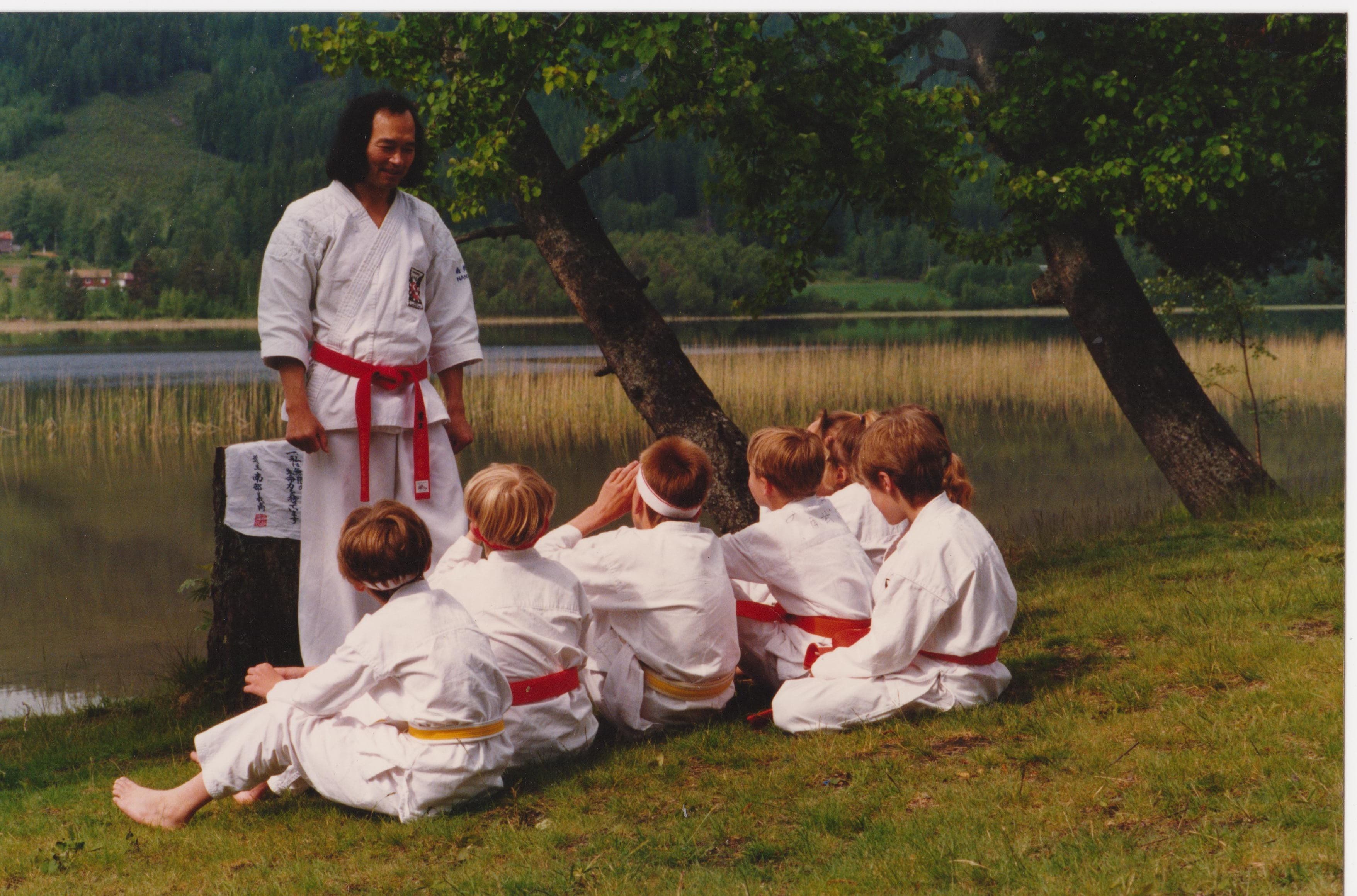Keiko
In Japan the term Keiko implies creative conversation with antiquity, learning according to the model of traditional inheritance, most often through teachers (Sensei) or older students (Sempai).
Trainings for children (Kodomo no Keiko)

In these trainings, all the complexity of Nanbudo training is brought closer to the youngest, mainly through various motor exercises and games in which basic biotic knowledge is developed. The greatest attention is paid to the system of breakfalls and rolling (Ukemi Taiso), coordinated sparring in the given form of Randori Kata and some basic shorter nanbudo forms (Shihotai Kata).
Training for adults (Otona no Keiko)
These trainings follow the Kyu and Dan grading program, designed so that the adult trainee is simultaneously introduced to all aspects of Nanbudo, from Japanese gymnastics, self-defence, therapeutic aspects, forms, weapon techniques, etc. The usual training structure is very traditional, and includes Japanese gymnastics and respiratory exercises at the beginning followed by basic techniques of punches, blocks, throwing and sweeping techniques, various forms, etc.
Training with wooden weapons (Buki Waza no Keiko)

In Nanbudo training, working with weapons is an indispensable part. There is no Nanbudo without the Buki Waza system. Nanbu Doshu has developed a fascinating system of practice with a wooden staff (bo) and a wooden sword (bokken), with many interesting principles and techniques, as well as kata, with which all other techniques in Nanbudo are deepened.
Special trainings (Tokubetsu no Keiko)

Special trainings are an integral part of the Kenshusei program. They are most commonly called Tokubetsu in Japan, which means entering into the deepest and most complex aspects of Nanbudo and Japanese Budo in general. These trainings deal with various somatic principles that are behind the techniques, and this type of training can be further abstracted into details.
Individual training (Kojin no Keiko)
In individual trainings, you can work quickly on a part of the program or further deepen certain segment of the Nanbudo, either with the aim of faster progress, preparation for the exam, etc.
Zazen, Mokuso and Misogi

The meditative aspects of Japanese Budo should not be neglected. In Nanbudo, we practice the following models of meditative training: sitting meditation or zazen, meditations guided by two mantras or Mokuso, and a traditional Japanese cleansing ritual with bells or misogi.